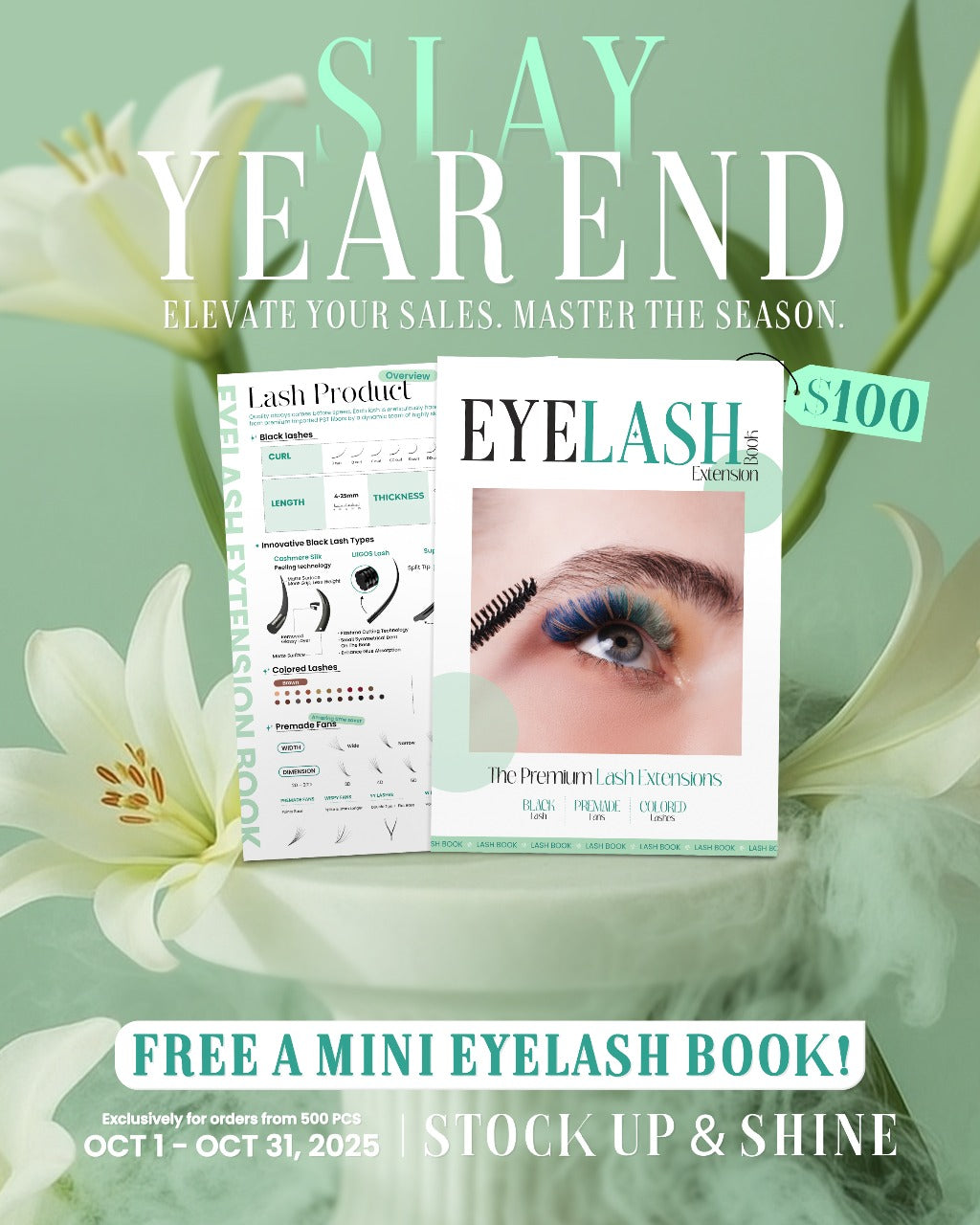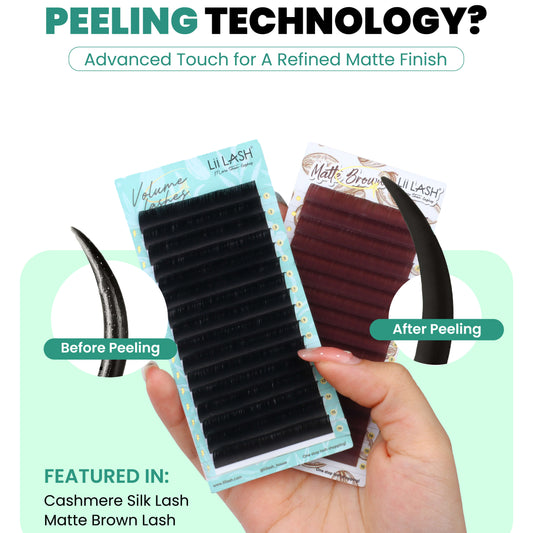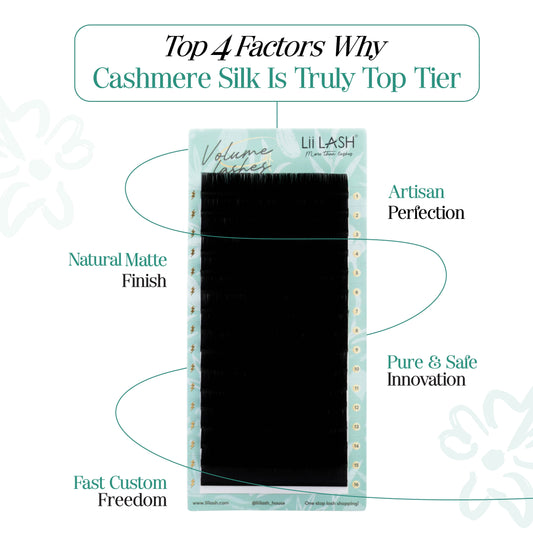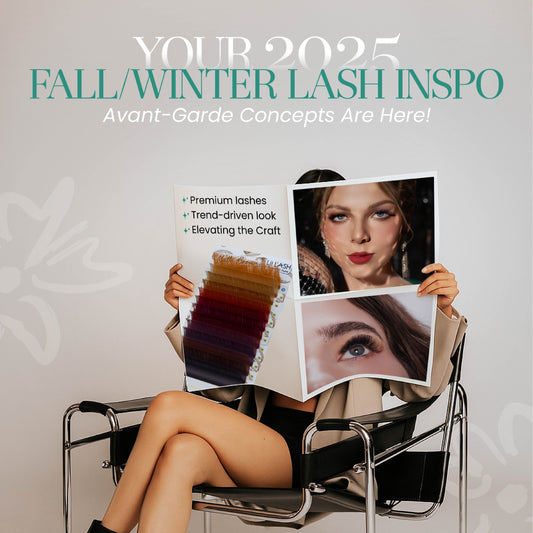How to deal with allergic reaction to lash extensions?
Eyelash extensions are a total game-changer, but for some clients, the dream can turn into a nightmare. Here's a common scenario: a client excitedly expects having beautiful lashes, but as the application begins, their eyes water and sting. This is well-known symptoms as allergic reaction to lash extensions. Unfortunately, this isn't uncommon.
As lash artists, understanding these reactions and prioritizing client comfort is your key. Allergic reactions to eyelash extensions are a real concern, and understanding why they happen is crucial for prevention.
Understanding Allergic Reactions to Eyelash Extensions
Let's break down the science behind these reactions. Allergies occur when our immune system mistakes a harmless substance (like an ingredient in lash glue) for a threat. This triggers the release of histamines, chemicals causing inflammation and irritation. These can manifest as:
- Redness and swollen eyelids
- Itchy and burning eyes
- Excessive tearing
- Light sensitivity (in severe cases)

What Possibly Are Allergens?
As a lash manufacturer, after researching and synthesizing case studies, here are what we found to be the usual suspects in lash glue allergies
Cyanoacrylate
This is the glue's main bonding agent, but its fumes can irritate some clients during curing. Due to its strong adhesive properties and rapid bonding, it can cause skin irritation, allergic contact dermatitis, and respiratory issues in sensitive individuals.
Carbon Black
This adds pigment to the glue, making it black. The more carbon black in the glue, the blacker it is. Carbon black can trigger sensitivities due to its particulate nature and potential to provoke immune responses.
Latex & Formaldehyde
Less common in modern glues, these should never be in lash adhesives.
Latex: A well-known allergen, latex can cause reactions ranging from mild skin irritation to severe anaphylactic reactions.
Formaldehyde: A strong irritant, formaldehyde can cause significant irritation to the skin, eyes, and respiratory system. Even in people without formaldehyde sensitivity, it can cause discomfort and adverse reactions.
These ingredients can all contribute to unpleasant experiences during or after lash application. But the good news? By understanding these allergies, you can take preventative measures to ensure a comfortable and luxurious lash experience for everyone!
Eyelash Extension Allergies: Recognizing the Signs
Knowing how to identify an allergic reaction from eyelash extensions is key for both you and your client. As lash artists, it's crucial to be aware of the telltale signs of allergies to ensure a safe and comfortable experience for your clients..
Early Warning Signs (Within Minutes to Hours)
Spicy Eyes: A stinging or burning sensation in the eyes is a red flag. This could indicate eye irritation after lash extensions from the glue fumes or other ingredients.
Water Works: Excessive tearing or watering eyes is a common reaction to allergens. If your client's eyes start producing a waterfall, it might be a sign their body is trying to flush out the irritant.
The Itch Factor: Itchiness around the eyes and eyelids is a major discomfort signal. If your client can't stop reaching for their eyes, it's best to pause the application.
Red Alert: Redness and inflammation of the eyelids are clear visual indicators of irritation. These can appear quickly if your client has a sensitivity to a particular ingredient.
Delayed Reactions (Within 24-48 Hours)
Puffy Power: Swelling of the eyelids, making them appear puffy or congested, can be a delayed allergic reaction. This might not show up immediately after the application, but within a day or two.
Crusty Companions: Crusting or flaking of the eyelids is another sign your client's body might be fighting something off. This can be uncomfortable and unsightly, so early detection is important.
Light Blues: Increased sensitivity to light can be a symptom of an allergic reaction to eyelash extensions. Bright lights might feel harsh or cause discomfort if your client is experiencing an allergy.
Blurry Vision (Severe Cases): In rare instances, blurred vision can occur during a severe allergic reaction. If your client experiences this, immediate medical attention is crucial.
Sudden Allergies Over Time
Even if you have used lash adhesives without any issues in the past, it is possible to develop an allergy to them over time. Repeated exposure to allergens like cyanoacrylate and carbon black can sensitize the immune system, eventually leading to allergic reactions after subsequent applications.
Additionally, changes in your body's condition, such as during pregnancy, can alter your immune response and increase the likelihood of developing new allergies.
How to deal with allergic reaction during application?
Your client's well-being should always be your top priority. Early detection is key! If your client experience any of these symptoms during the application, especially severe redness, stinging, or swelling, stop the process and remove the extensions immediately.
Use a gentle cream remover to remove the applied lash extensions. More importantly, seek immediate medical attention if your clients experience difficulty breathing. This could be a sign of a serious allergic reaction. It's always better to err on the side of caution and recommend seeking medical advice. Remember, a happy and healthy client is a returning client!
How to prevent allergic reaction
Prevention is always preferable to treatment when it comes to ensuring the safety and comfort of your clients. Here are some proactive steps you can take to minimize the risk of allergic reactions during lash extensions:
1. Client Allergy Disclosure
To ensure a safe and personalized lash extension experience, advise your clients to disclose any allergies or eye sensitivities beforehand. This information allows you to customize their approach, minimizing the risk of adverse reactions and ensuring a comfortable treatment tailored to each client's specific needs.
2. Conduct a Patch test Before Appointment
Conduct a patch test prior to the appointment to identify any potential allergies to the adhesive. This simple step helps preemptively address sensitivity issues.

3. Using Nano Misting
Curing glue releases fumes that can trigger allergies. Traditional curing times can take 24-48 hours, exposing eyes to these fumes for an extended period.
Nano misting technology accelerates the glue curing process to 4-10 hours. This significantly reduces exposure time to the fumes, potentially preventing them from reaching the threshold needed to trigger an allergic reaction.
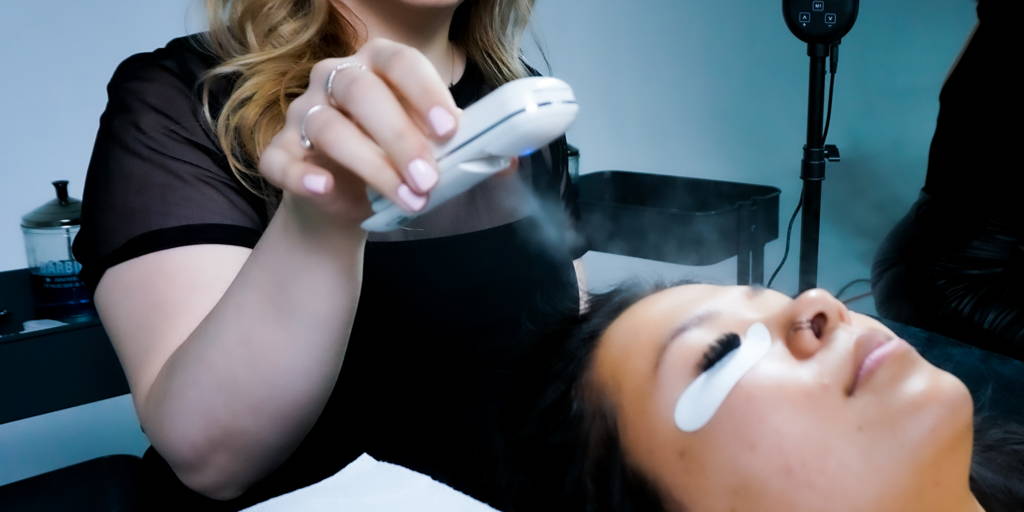
4. Sensitive Glue
Clear Adhesives (if Reaction is to Carbon Black)
Opt for clear adhesives that contain minimal or no carbon black if clients react to pigmented glues. Clear adhesive is also ideal for colored lash extensions and can mitigate irritation.
Slow-Drying Adhesives
Fast-drying adhesives can release a concentrated burst of fumes during application, potentially triggering reactions.
Slower-drying adhesives allow for more controlled application and potentially less concentrated fume exposure. This can be beneficial for clients sensitive to the initial curing phase. This is beneficial for not only sensitive clients but also lash artists if you are beginner.
Reduced Cyanoacrylate or Less-irritating Adhesives
Cyanoacrylates come in various types, some more irritating than others. Choose adhesives formulated with gentler ingredients to better suit clients with sensitive eyes and skin.
5. Lash Cleanse After Application
Uncured glue residue left on lashes after application can continue to release fumes and irritate sensitive eyes.
Using a gentle, oil-free lash cleanser specifically formulated for extensions after application can help remove any uncured glue residue, minimizing potential irritation.
6. Benadryl (as a Temporary Preventative)
Benadryl is an antihistamine that can help prevent allergic reactions by blocking histamine, a chemical released by the body during an allergic response.
If your clients are aware of their allergic reactions to lash extensions, consider suggesting they consult their doctor about taking Benadryl before their lash appointment (for appropriate dosage). This precaution is akin to taking motion sickness medicine before a car ride, potentially preventing allergic reactions in susceptible individuals.
It's important to note that this is not a long-term solution and should be used with caution.
We recommend consulting with a healthcare professional before using any medications to prevent allergic reactions.
CONCLUSION
Prioritizing client safety and comfort during lash extensions involves proactive measures such as patch testing, using advanced curing technologies, and selecting gentle adhesives. Encouraging clients to disclose allergies and sensitivities ensures a tailored approach, minimizing risks and enhancing satisfaction. By implementing these practices, lash artists can provide a luxurious and worry-free experience that exceeds expectations.
YOU MAY ALSO LIKE
10 Tips To Combat Lash Mites In Your False Lashes
Things You Don't Know about Cyanoacrylate - Eyelash Glue Ingredients
Lash Fills: Maintaining Your Luscious Lashes for Long-Lasting Beauty
